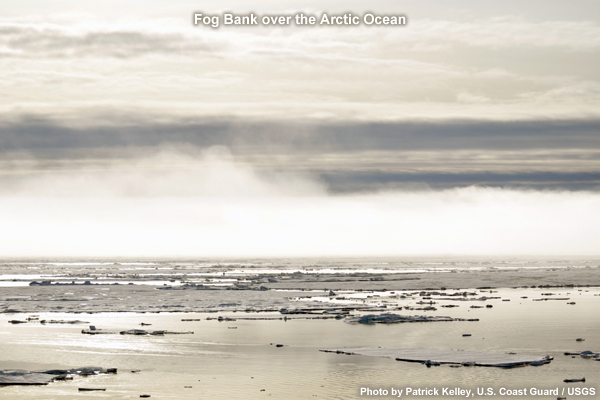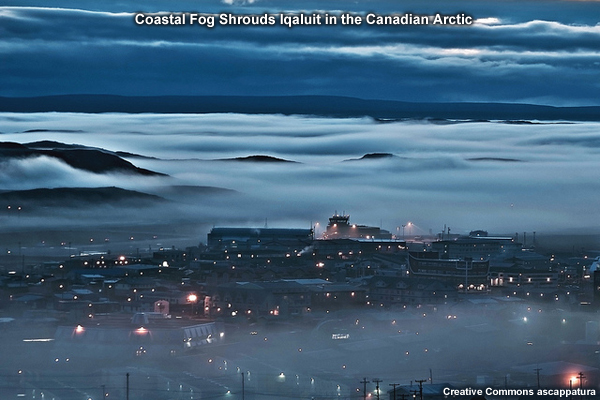Fog/Stratus/VisibilityAdvection Fog

Advection fog, common in the Arctic, occurs when air is transported from over a warmer surface to over a cooler surface. The air mass might have a high relative humidity prior to advection, or the cooler surface can also be a moisture source. With enough humidity and enough cooling, the air saturates and fog forms.

The irregular coastlines of the Arctic help set the preconditions to this fog formation. Boggy tundra and open ocean provide moisture. The cold ocean promotes formation of a low-level inversion. The coastline provides strong temperature gradients so that fog can form as air flows on and offshore.